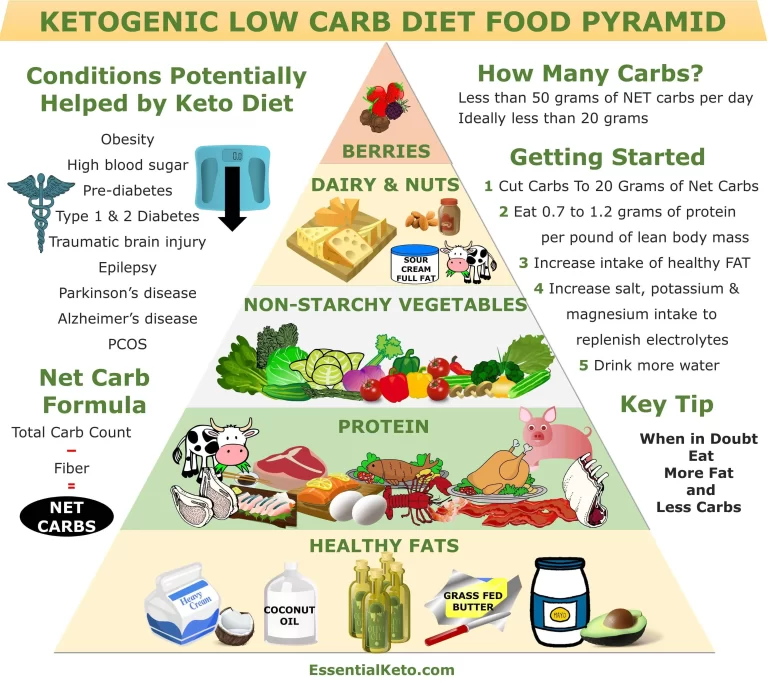Epilepsy affects millions of people worldwide, causing involuntary seizures that can significantly impact their daily lives. While there are various treatment options available, one alternative therapy that has gained attention in recent years is the ketogenic diet. Originally developed to treat children with epilepsy, the ketogenic diet has proven to be an effective method for managing seizure activity. Let’s explore how this diet works and its benefits for individuals with epilepsy.
Understanding Epilepsy
Before diving into the ketogenic diet, it’s essential to comprehend the underlying condition it aims to alleviate – epilepsy. Epilepsy is a neurological disorder characterized by recurrent seizures, resulting from abnormal brain activity. Seizures can vary in intensity, duration, and frequency, often causing cognitive impairment and physical harm to the individual experiencing them.
What is the Ketogenic Diet?
The ketogenic diet, or keto diet, is a low-carb, high-fat dietary approach designed to induce a metabolic state known as ketosis. Typically, our bodies primarily rely on glucose derived from carbohydrates as the main source of energy. However, in ketosis, the body switches its energy source to ketones, which are produced when the body breaks down fat. Essentially, the ketogenic diet aims to put the body into a state of sustained fat-burning.
How Does the Ketogenic Diet Help with Epilepsy?
The ketogenic diet’s effect on epilepsy was initially discovered by Dr. Russell Morse Wilder in the 1920s. It was observed that fasting could reduce seizure activity in patients, so Dr. Wilder developed a dietary intervention that could mimic the effects of fasting – leading to the development of the ketogenic diet.
There are a few proposed mechanisms through which the ketogenic diet helps individuals with epilepsy:
Increased Ketone Levels
Elevated ketone levels in the blood have been associated with a reduction in seizure activity. By severely restricting carbohydrates and increasing fat intake, the ketogenic diet induces the liver to produce more ketones. These ketones provide an alternative energy source for the brain, potentially stabilizing abnormal electrical activity and reducing seizures.
Stabilizing Blood Sugar Levels
Stabilizing blood sugar levels is crucial for seizure control. When blood sugar fluctuates, it can trigger seizures in individuals with epilepsy. The ketogenic diet’s low-carbohydrate nature helps regulate blood sugar levels, minimizing the likelihood of blood sugar spikes and crashes that could potentially provoke seizures.
Reducing Inflammation and Oxidative Stress
Research suggests that the ketogenic diet may have anti-inflammatory and antioxidant effects. Inflammation and oxidative stress can contribute to the development and progression of epilepsy. By following a diet rich in anti-inflammatory foods and high-quality fats, individuals with epilepsy may experience a reduction in these harmful effects.
Modulating Brain Chemistry
The ketogenic diet may impact brain chemistry in a way that reduces seizure activity. It has been observed that ketones can increase the production of inhibitory neurotransmitters like gamma-aminobutyric acid (GABA) while decreasing the excitatory neurotransmitters like glutamate. This shift can create a more balanced and stable environment within the brain, potentially reducing the occurrence and severity of seizures.
Potential Benefits of the Ketogenic Diet
While primarily recognized as an effective tool in managing epilepsy, the ketogenic diet has also shown potential benefits in other areas:
Weight Loss
The ketogenic diet’s emphasis on fat intake and restriction of carbohydrates can promote weight loss and improve metabolic health. When the body is in ketosis, it becomes efficient at burning stored fat for energy.
Improved Insulin Sensitivity
By reducing carbohydrate consumption, the ketogenic diet can enhance insulin sensitivity. This improvement may benefit individuals with insulin resistance, metabolic syndrome, and type 2 diabetes.
Enhanced Mental Clarity
Many individuals report improved mental clarity and increased focus when following the ketogenic diet. This effect is often attributed to stable blood sugar levels and the brain’s utilization of ketones as a fuel source.
Reduced Inflammation
The anti-inflammatory properties of the ketogenic diet may provide relief for those with inflammatory conditions like arthritis, acne, and autoimmune disorders.
Important Considerations and Potential Side Effects
While the ketogenic diet has shown promising results, it is important to approach this dietary intervention with caution and seek guidance from healthcare professionals, particularly for individuals with epilepsy. Some considerations and potential side effects include:
Keto Flu
When transitioning to a ketogenic diet, some individuals may experience flu-like symptoms known as the “keto flu.” This can include fatigue, headaches, dizziness, and irritability. These symptoms are usually temporary and can be mitigated with proper hydration and nutrient intake.
Nutrient Deficiencies
Restricting carbohydrates may lead to reduced intake of important vitamins, minerals, and fiber-rich foods. It is crucial to ensure a well-balanced and varied diet that compensates for potential nutrient deficiencies.
Monitoring and Medical Supervision
Individuals with epilepsy should follow the ketogenic diet under medical supervision to ensure safety and monitor any potential changes in seizure activity. Regular check-ups and blood tests may be necessary to evaluate the effectiveness and impact of the diet.
Conclusion
The ketogenic diet has emerged as a valuable tool in managing epilepsy and offers potential benefits in various aspects of health. By shifting the body’s energy source from glucose to ketones, this high-fat, low-carb diet seeks to stabilize brain activity and reduce seizures. However, it is vital to approach the ketogenic diet with caution and seek guidance from healthcare professionals to ensure safety and optimal outcomes.












